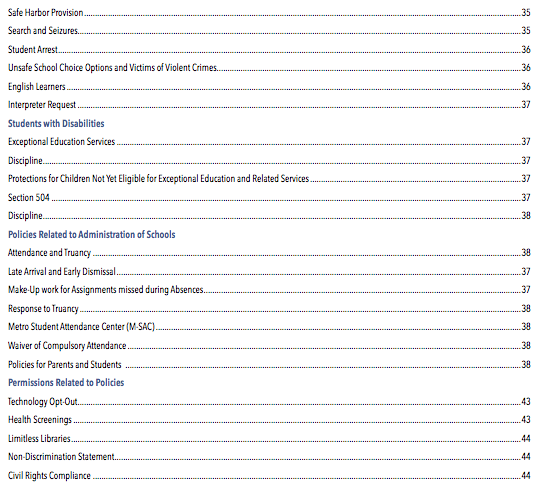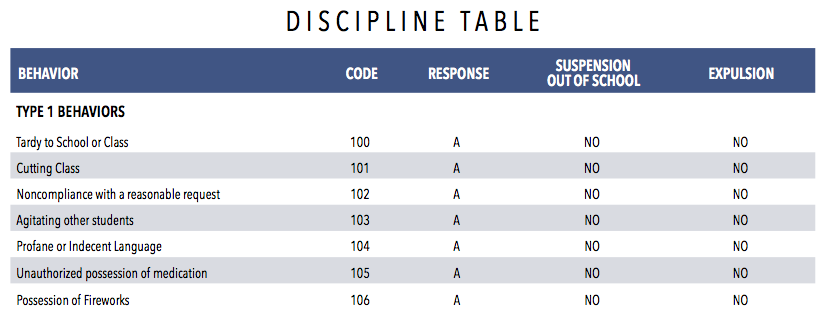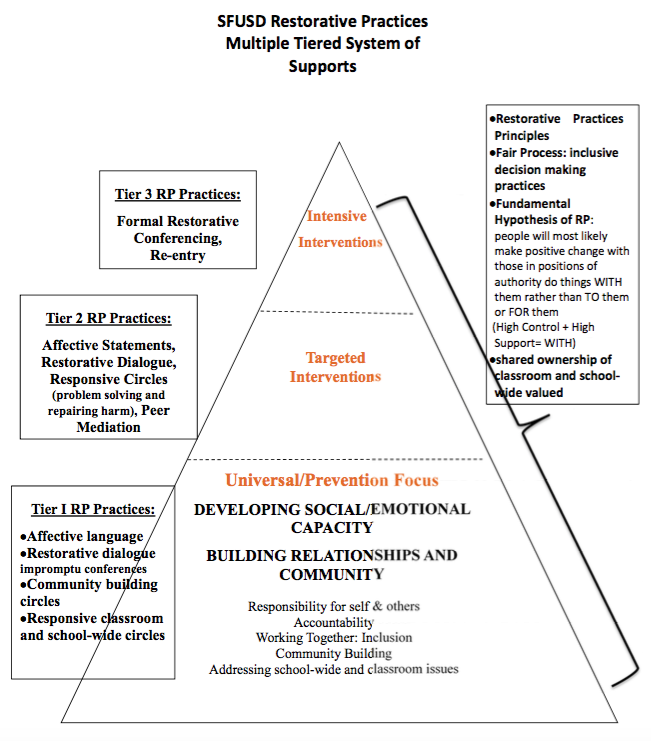School systems use standardized “codes of conducts” (COCs) to govern student behavior and conduct as well as what responses should follow these behaviors. These codes must formally comply with federal, state, and local laws, and are often informally amenable to student, teacher, staff, and parent needs.
Present example justifications from two districts’ COCs include: “Educated citizenry is essential to good government and can be attained only in an atmosphere conducive to learning, the Orange County Board of Education requires the maintenance of good order in the schools” and “The Rochester City School District is committed to ensuring that our schools are safe, secure, and orderly environments in which teaching and learning can take place each day.”
Furthermore, respective example descriptions of COCs include: “The purpose of this policy is to provide students, parents, guardians, school personnel, and the public with a concise, comprehensive description of the expectations for the behavior of all students enrolled in the Orange County Schools” and “The Rochester City School District code of conduct provides a comprehensive description of unacceptable behavior, including incidents involve drugs or weapons. The RCSD Regulations of Intervention and Discipline provides the range of permissible disciplinary and intervention measures which may be used when students engage in such behaviors, as well as a range of guidance interventions schools may use to address student behavior.”
Given these mandates and their associated justifications, there is plenty of legal and conceptual room to integrate principles associated with nonviolence and restorative practices into schools’ codes of conducts.
Here are three ways schools might integrate restorative practices into their current COCs:
First, the conceptual scope of COCs provided in the justifications above warrant nesting COCs in more comprehensive documents that address academic atmospheres conducive to learning, as seen in this example from Metro Nashville Public School System.

By nesting COCs that focus on behavior within treatments of school atmospheres, a school implicitly matches restorative practice assumptions that one must address both the youth and their context to inspire positive changes. Moreover, such an approach matches widely held social psychological theoretical assumptions that behavior is a function of the person and their environment.
Second, one might adapt a discipline table of behaviors and responses to restorative practices by including restorative options in possible responses (See example table below).

If one thinks about restorative practices as a tiered system of supports (see image below), then one might use more universal prevention-oriented practices to address low-level behavioral problems and more intensive interventions for corresponding behavioral problems.

Third, a school or district might engage in a process to evolve their COCs akin to restorative circle practices. That is, a school or district might first clarify their mission, vision, values, and shared language regarding behavior and discipline, and then use circle practices to talk with different stakeholders about how to evolve their COCs within their pre-clarified parameters. In this way, they can ensure that their COC remains both relevant and responsive to present needs.








